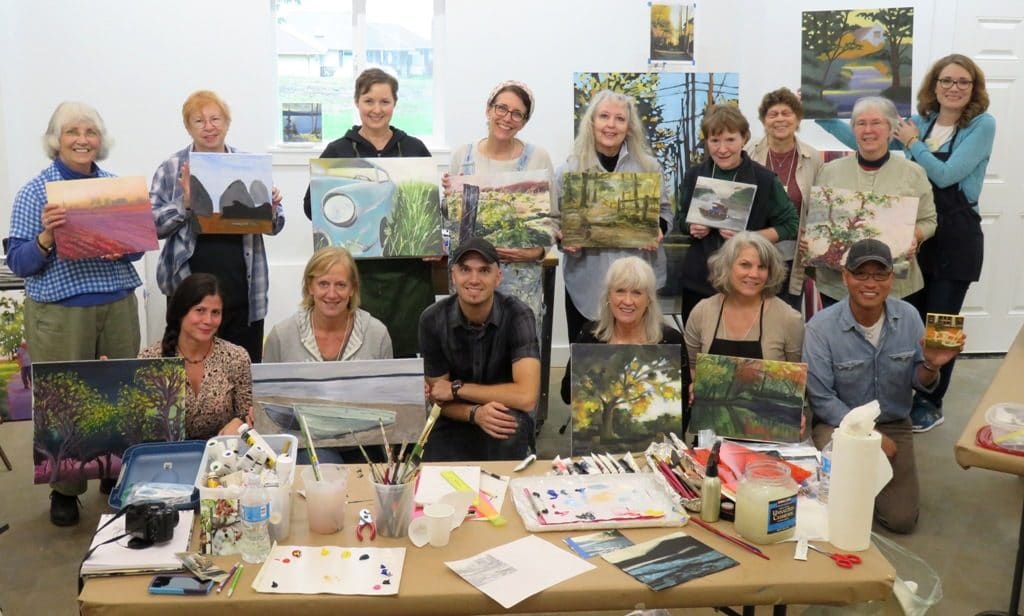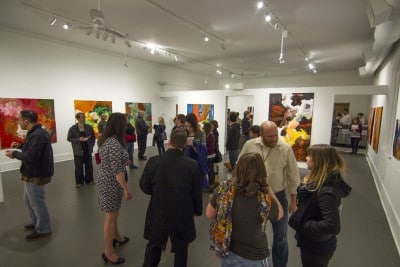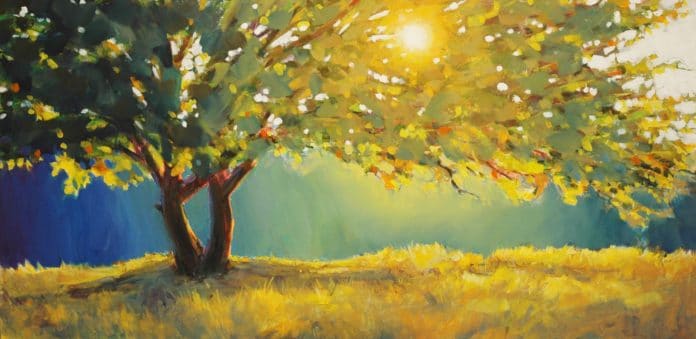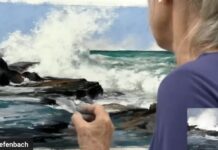Advice for artists > Why is taking risks so important for our growth? Jed Dorsey explains in this excerpt from “The Confident Artist.”
Advice for Artists: Take Risks
By Jed Dorsey
www.jeddorseyart.com
We all take risks, don’t we? You risked when you started reading this. Will it be worth your time? Some risks seem small. Some seem big. It’s not too big a risk to sing in the shower, but to audition for a lead role in a musical would terrify most of us. But why is taking risks so important for our growth as artists, especially when it comes to confidence?
We must take risks and grow, or we are choosing to let our fears control us and stop us from becoming who we are made to be.
For each of us, taking a risk might look different. For some of us, it might feel risky to follow a teacher’s advice (or my advice, for that matter!). For others, it might be a risk to not follow a teacher’s advice. Maybe you will experiment with a painting exercise rather than doing it exactly like your instructor did it or prescribed. It will usually mean trying something new. Or maybe trying something again that you failed at before. But now, you are ready to risk again because failure is a marker on the path to success. Here are some ideas of new things you might venture out and try:
1. Paint in public or invite friends to a demonstration.
It takes confidence to set up your easel and begin painting with all the world watching. Don’t worry if your painting isn’t a masterpiece. People enjoy watching your process and talking about technique.

2. Teach a class to beginners.
People will be amazed at your talent, and you’ll realize how much you really do know. Invite friends for a sip-and-paint or sign up to teach at your local community center.
3. Try a medium you’ve always wanted to try.
If you’ve always used oil or acrylic paint, try watercolor, egg tempera, or gouache. Don’t be afraid to experiment. You might discover a new love.
4. Take a drawing class focusing on the human figure.
Good drawing skills are crucial to painting, and figure drawing is a wonderful way to grow in that.
5. Join an art community and make new friends.
You’ll be surprised how many forms of art you didn’t even know existed. Get to know other artists and learn their techniques.

6. Enter your artwork in a group show.
See how it feels to have your work on display and soak up the positive feedback.
7. If you’ve never tried plein air painting, get out into the world and give it a whirl.
Hike out to a beach and set up on the sand. Or if physical limitations hinder you, set up a table or small space on your back deck. Painting outdoors is exhilarating.
8. Sign up for a painting class in your local community or an online painting course.
Don’t keep doing the same thing over and over; learn something new and see how other people are doing it.
9. Try new subject matter.
Maybe you’ve always painted landscapes or still life. Try doing a portrait. Consider how the techniques you use for one style might be infused into your new subject matter. You will add breadth to your artistic experience that will impact all you do.
10. Reinvent yourself as an artist.
If you’re a potter, try painting. If you’re a painter, try sculpture. Every experience shapes you and builds on who you already are.
Your life will also change as you take risks. You will grow and flourish as a confident, courageous artist — but better still — as a confident and courageous person.
How do you take risks as an artist and develop your confidence? Share it with us in the comments below!
Jed Dorsey is a fourth-generation artist and author of “The Confident Artist: Ten Secrets for Overcoming Fear and Unleashing Creative Courage.” He is best known for his radiant, color-filled landscapes and is passionate about acrylics. Jed fell in love with this medium after stumbling across some beautiful paintings by the Canadian artists Robert Genn and Mike Svob in 2001. Jed was fortunate to study under these artists during his formative early years as a painter in Vancouver, BC. Since then, he has studied under other great artists like Ovanes Berberian, John Michael Carter, and Carolyn Anderson. He began painting outside in acrylics while living in Indiana and has won numerous awards at various plein air events since then. He now lives on Camano Island, WA, where he paints, teaches, and creates instructional painting videos through Acrylic University.
And browse more free articles here at OutdoorPainter.com





Jed, This is a wonderful, inspiring article! Thank you so much.I plan to keep a copy in my painting journal as a reminder.
Hi Sue, thank you for your encouragement, and I’m glad that it was helpful 🙂
I recently started sketching conifer trees from memory in a sketchbook. My sketches are very quick, loose and I’m trying multiple styles. I sketch at least one a day up to 4 or 5. It’s been fun and exhilarating.
That is great, Jon! Glad to hear it!
We all take risks, don’t we?
No, we don’t. If you do, be honest with your insurance agent. You might be committing fraud by engaging in risky behavior while they think you are a safe and responsible citizen.
In all seriousness, what are these bewildering fascinations among artists that you must take risks and break rules or forget the rules? These don’t make you creative and don’t make you into a master artist. If you only took the time to understand what it really means to be an artists and what make a masterpiece the masterpiece you would stop falling for this nonsense.
Bitter? Not sure your point in being so negative. Does it make you feel better than others? Some people don’t want to paint a masterpiece. They want to paint for the sheer joy of it! Stay in your sourpuss world and keep the negative comments to yourself and and let others be encouraged! My wise grandmother said if you don’t have anything good to say, don’t say it at all.